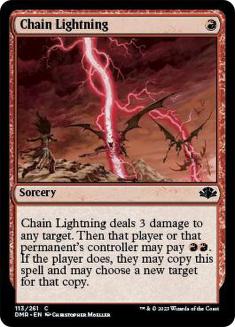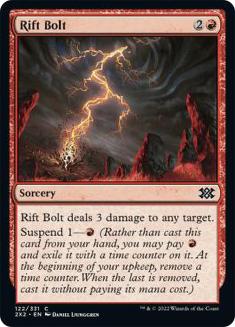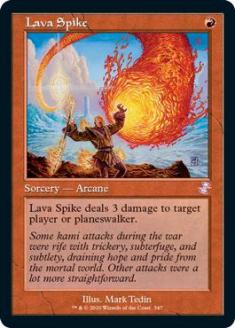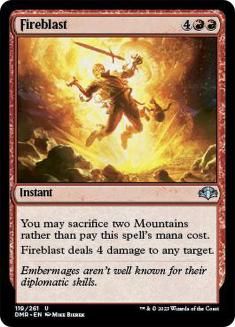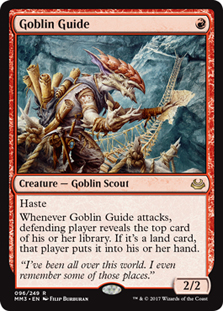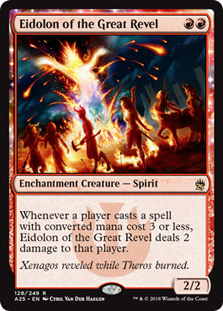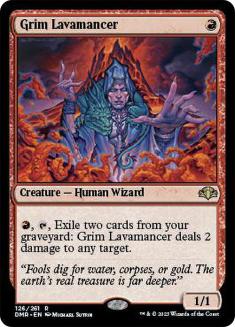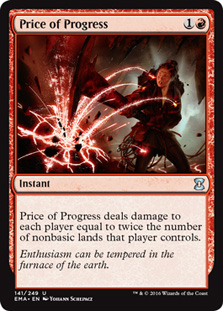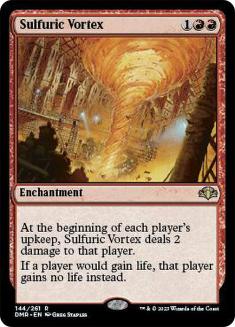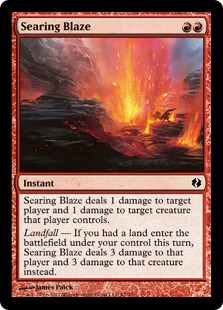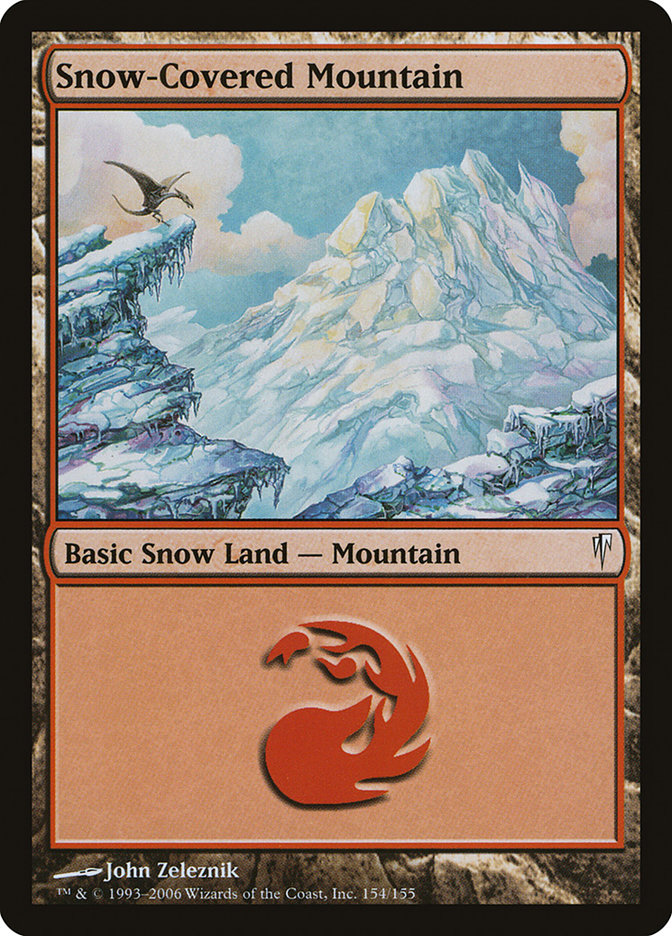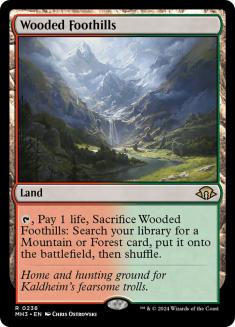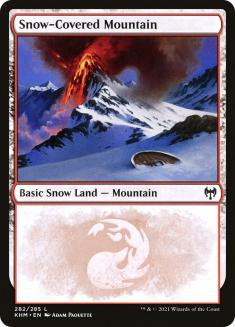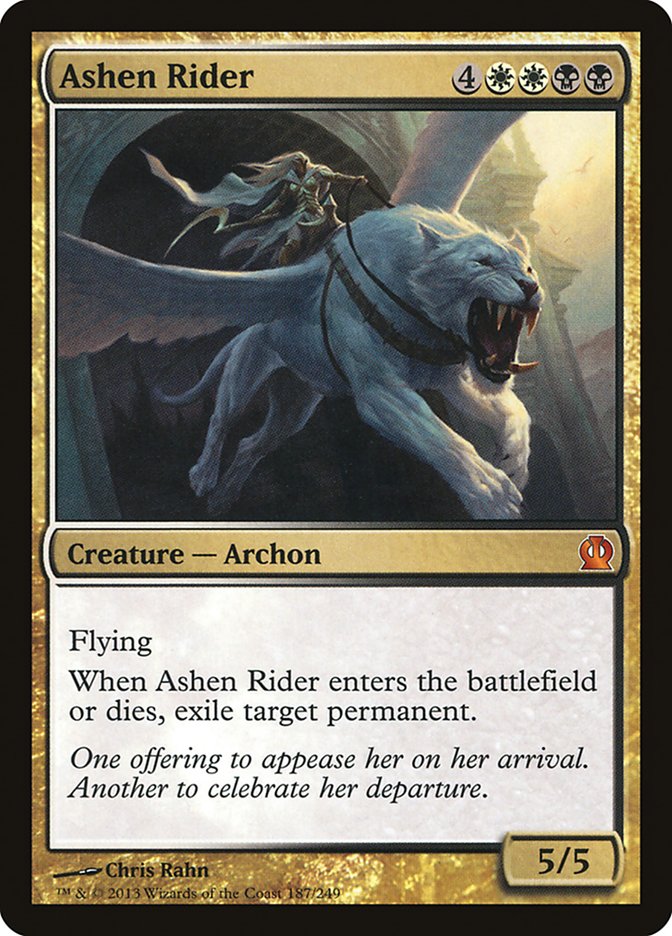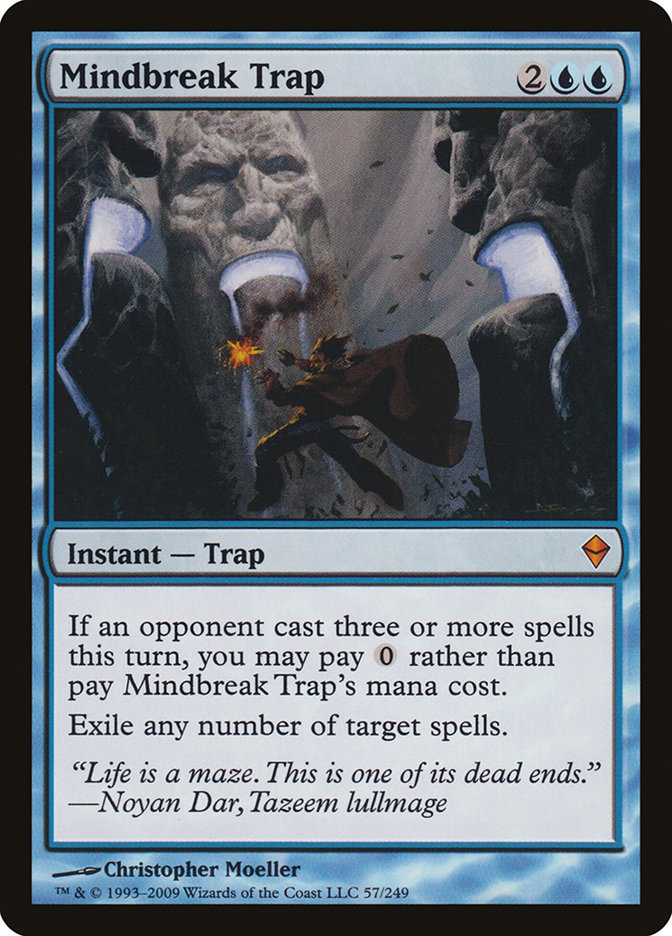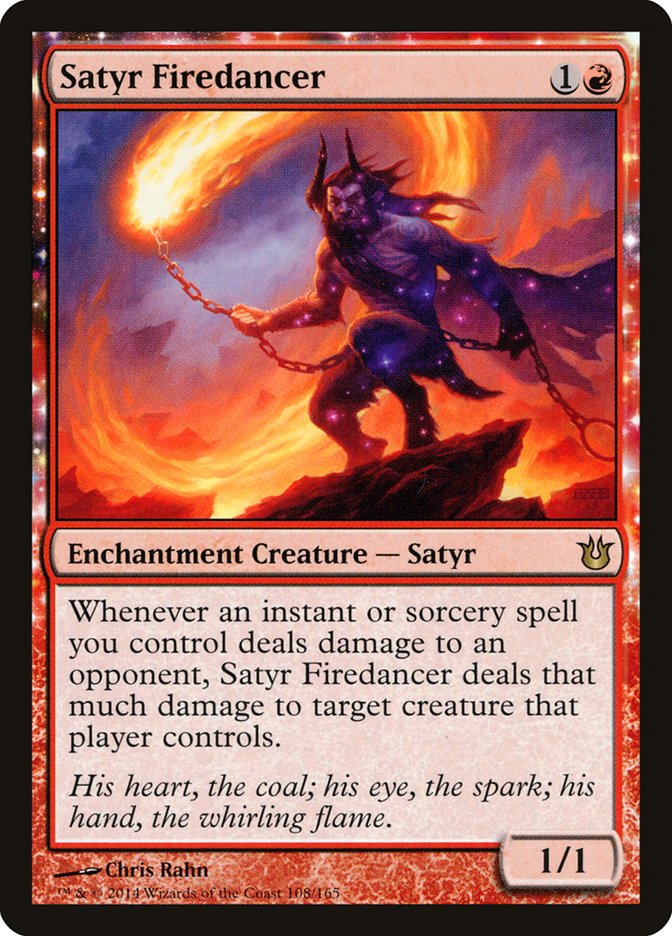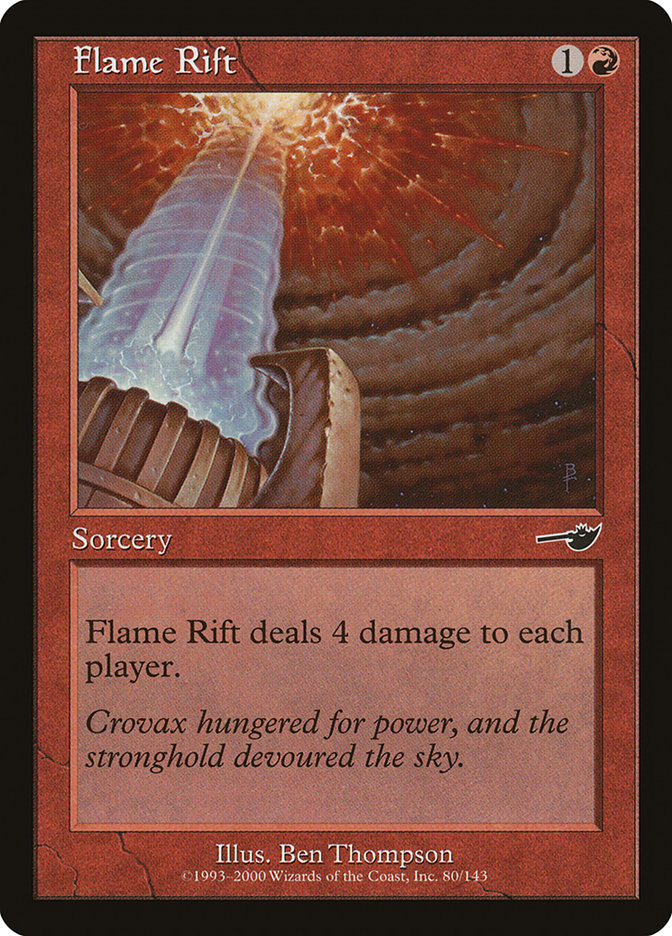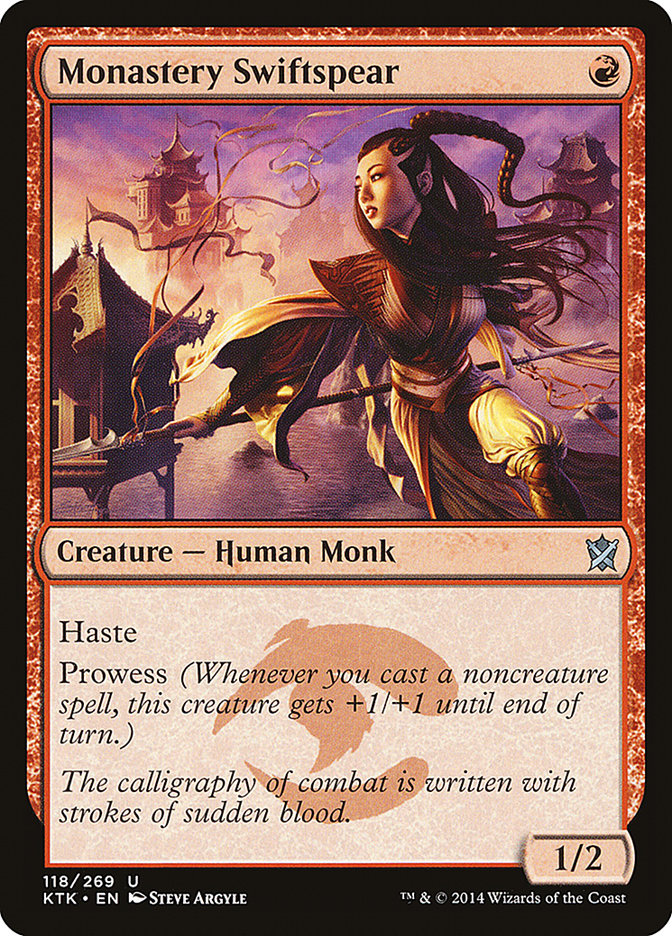I told her not to get too excited.
While I was able to win my camera match to put me at 6-1-1, there was going to be at least one 6-1-1 that was not going to make top 8. My tiebreakers were
good enough going into the round, but not by much, and bigger swings have happened before.
As I went about my business sorting through some Standard cards we had borrowed while waiting for the end of the round, she was surprised at how low key I
was after winning a difficult match against a difficult matchup on camera essentially playing for top 8. I told her I would get excited when they announced
my name, no sooner, as I’ve seen far too many ninth place heartbreaks in my long career. She was extra invested in how I was doing, because not only did
she want me to do well, but I was also playing her deck.
My girlfriend Nicole had played a little Magic before we started dating, and when she expressed interest in coming to an IQ with me it sounded like fun.
She’s played a number of events since then, and it has been fun having her around and teaching her at the same time. I build her decks for each event, and
when she finally expressed interest in coming to an Open Series event I had to pick a good Legacy deck for her that would be powerful but not too difficult
to pilot for someone extremely unfamiliar with the format.
Burn was the perfect deck.
It was relatively cheap, fast and powerful, and had very good matchups against most of the fair decks. While it could be challenging to play around all of
your opponent’s possible cards, the deck was non-interactive enough to be a good straightforward choice for someone new to the format. Her second Open with
the deck she took it to a top 64 finish, which was her first cash and a nice start for a new player. While not really a deck I think I would play myself, I
definitely considered the deck to be a viable choice in Legacy, even for an experienced player.
This was fortunate, because when I couldn’t find the Volcanic Islands and Force of Wills I needed for my U/R Delver deck, Nicole immediately placed the
deck in my hands and told me to play it because the event was so much more important to me than to her. I felt bad because I knew she enjoyed playing it,
but I also knew that she was right and I could put her into some drafts or side events and she would still have a good time. She has been extremely
supportive of my goal of making the Players’ Championship, and I am very thankful for that.
So here I was, ten minutes before the event was to start, with a burn deck and a decklist.
Creatures (11)
Lands (20)
Spells (29)

To be completely honest, the list is not optimal. As Patrick Sullivan stated in the coverage, there should be more fetchlands, although I don’t know if I
agree with his ten fetchland/ten Mountain split in a deck with Eidolon of the Great Revel and Sulfuric Vortex. In Delver matchups, they will be threatening
your life total, and while the benefit of improving Grim Lavamancer and Searing Blaze is great, I don’t think you need to go too far. I think closer to
eight is correct.
A quick aside- It was a lot of fun watching my two camera matches after the fact, as both Patrick and Cedric Phillips have really been doing a bang up job
on coverage. With Patrick’s familiarity with the deck he was able to articulate my thoughts almost before I had them, and he provided some really spot on
analysis as to why I was doing most of the things I was doing. I was really impressed with his deduction of why I didn’t attack with my Grim Lavamancer in
game 1 of round 8 against Storm. I can’t say enough good things about what those guys are doing for Magic coverage, and it’s not just because I consider
them friends and colleagues.
Otherwise, I was very happy with the maindeck. While sometimes Searing Blaze or Price of Progress can be dead cards, they are almost never completely dead,
and when they are good they are some of the best cards in the deck.
When looking at the deck as a whole, the best way to break down the deck is into three parts.
20 Fixed Damage Sources
Most people think of Burn as the “Lava Spike Deck,” but in a lot of ways it has grown into much more than that. While a deck with 40 Lava Spikes and 20
Mountains might goldfish faster, it would quickly run into trouble if anything at all went wrong. This could include a mulligan or two, a few too many
lands, your opponent directly interacting with your spells with either counterspells or discard, or lifegain from cards like Deathrite Shaman or
Batterskull.
While these cards are definitely the meat and potatoes of the deck, these are not the cards that really make you want to play it. While yes, sometimes you
will just actually Lava Spike them six times and then Fireblast them for the win, these cards all mostly serve to support and supplement the real
workhorses of the deck we will see in our next section.
20 Variable Damage Sources
This is where the true power of the deck lies. The deck’s three creatures do a fantastic job of acting like a burn spell that also must be answered. Both
Goblin Guide and Eidolon of the Great Revel will almost always deal at least two damage, even if they are killed, which makes them extremely valuable. In a
lot of ways, Goblin Guide is sort of like a mini-planeswalker. This may sound silly, but one of the most valuable things about planeswalkers is that they
can create some sort of advantage the turn they come into play that can’t be undone by removal. Even if you Hero’s Downfall an Elspeth, Sun’s Champion, it
was still able to produce three power worth of creatures or kill a creature, and that card advantage can’t be undone.
In the Burn deck, the card advantage is really damage advantage, and no amount of Abrupt Decays can get that two life back. The same thing goes for Eidolon
as your opponent will almost always have to take two damage to kill it. And if either of them stays in play, they will continue to deal more damage and
gain you more advantage until they’ve done enough that the rest of your deck can finish them off.
While Grim Lavamancer doesn’t have this direct effect, it is so good against any deck that wants to play fair with creatures that it simply must be killed.
Two damage a turn is also a very fine output, and while it is not as spectacular as the other two creatures, it is still well worth the spot.
Price of Progress is often one of the most powerful cards in the deck, and any opponent who doesn’t respect it will quickly learn the error of their ways.
Many of the Delver decks, Deathblade decks, and Sultai decks play all non-basic lands, which makes Price of Progress good for 6-10 damage at instant speed
to play around counterspells. Is Price of Progress the most volatile card in the deck? Absolutely, and there will be times you will be praying for your
Miracles opponent to just draw a damn Tundra (and don’t get me started on it in the mirror), but Burn is a somewhat volatile deck and the power is there.
Sulfuric Vortex is a card that is so good in every fair matchup it is absurd, and it is the one card that can really get you out of nasty situations
involving Batterskull or Counterbalance locks. The only counts against it are how bad it is against combo decks, and how hard it can sometimes be to cast a
three mana spell in a deck with twenty lands. It’s very possible the deck wants a second in the board.
“Hey wait Jim, why is Searing Blaze, a card that only ever does a maximum of three damage, in our ‘variable damage sources’ section?” Searing Blaze is an
interesting one because it’s the only burn spell you actually get to profitably point at your opponent’s creatures. Yes, sometimes you are just going to
have to Chain Lightning that Stoneforge Mystic because how of bad a Batterskull on turn 3 would be for you, but by doing that you are slowing down your
clock and going against the grain of what the deck really wants to do. Searing Blaze lets you do both and is variable not for the amount of damage it
deals, but for the amount of damage it prevents and the time it gains you by actually interacting with your opponent while burning.
20 Mana Sources
During the tournament Patrick Sullivan pulled me aside because he had a major issue with my manabase. No it wasn’t the fetchland count, it was these:
I’ve always run snow-covered lands in Legacy (because why not give em one more thing to think about?), but Pat was shocked and appalled. He lectured me on
something about having nice basic lands and owning a nice suit or something, but if Volcanic Islands aren’t currently in my budget I don’t think ten
Arabian Nights basic Mountains are either. Sorry Patrick, you’re just gonna have to deal with it.
Some Sample Hands
It only takes a few sample hands to see how important the variable sources of damage are to the deck. Let’s look at two possible six card hands:
This is the kind of hand you draw after a mulligan and feel awful about because it really feels like you just can’t win. At best, this hand puts our
opponent at eleven life, and then we have a whole lot of work to do off the top of our deck. This hand is extremely one dimensional and wholly
disappointing.
Now that’s a hand. Did we mulligan? Sure, but this hand is capable of doing a ton of damage and is really only limited by how well our opponent can
interact with us. It is very easy to see the difference between our best cards and our support cards when looking at two hands like this.
Sideboard
The sideboard is definitely where the deck needs the most work. Relic of Progenitus and Smash to Smithereens are both cards I am very happy with, but I am
not so sure about the rest of it.
Ashen Rider is for the Show and Tell/Reanimator matchups, but it is possible that it should be Ensnaring Bridge instead, which would have broader
applications. I typically am not a fan of ‘this is going to stop you from doing what you want until you find an answer’ type of cards like Ensnaring Bridge
or Moat, but sitting behind an Ensnaring Bridge while firing off burn spells is definitely a proven strategy.
Patrick and Cedric were speaking ill of Mindbreak Trap during the coverage, but it is a card I’ve stood by both in my Goblins sideboard and now in the Burn
sideboard. While it is vulnerable to targeted discard, a deck like Goblins or Burn has a fast enough clock along with other limited disruption (either
Wasteland/Rishadian Port from Goblins or Eidolon from Burn) that making them find that extra piece before going off is damaging enough. And, of course,
there are the games where they can’t afford to wait for a Cabal Therapy and have to just go off and run headlong into it.
Satyr Firedancer (not Wayfinder!) is for the heavy creature decks like Elves and Death and Taxes, but honestly I have never cast the card. It is possible
it’s just too slow on the draw against Elves, but I would need some games to see if that was true or not.
While Flame Rift may seem like a very odd card to have in the sideboard, it has a very specific purpose. In many matchups where your opponent has either
little to no creatures or no non-basic lands, you are going to have to board out either 4 Searing Blaze or 4 Price of Progress, and many times because
there is only so much room for cards to board in, you are only going to have 3 Mindbreak Trap or 3 Ashen Rider to bring in. Flame Rift serves the purpose
of being that all purpose fourth card to cut. It’s simple, but it is good in any matchup where they don’t have creatures because they definitely won’t be
pressuring your life total.
Moving Forward
The biggest question I’ve gotten in the last few days is if the deck should play Monastery Swiftspear over Grim Lavamancer. My initial impression is no.
Unlike the U/R Delver deck, we’re not going to be chaining together a bunch of Brainstorms, Ponders, and Gitaxian Probes in the midgame, which means that I
don’t think it will do enough. The timing of many of our spells is also very important, and restricting our instants to our pre-combat main phase also
seems very restricting.
Is Burn a good choice for Grand Prix New Jersey? If you are comfortable playing a deck that’s a little bit high variance and doesn’t contain Brainstorm
then I think it is definitely a very solid choice. While I didn’t choose to play the deck last Sunday, I was perfectly happy playing it in a
pinch; the deck has some extremely powerful and underutilized cards in it, and has great matchups against many of the best fair decks in the format.


